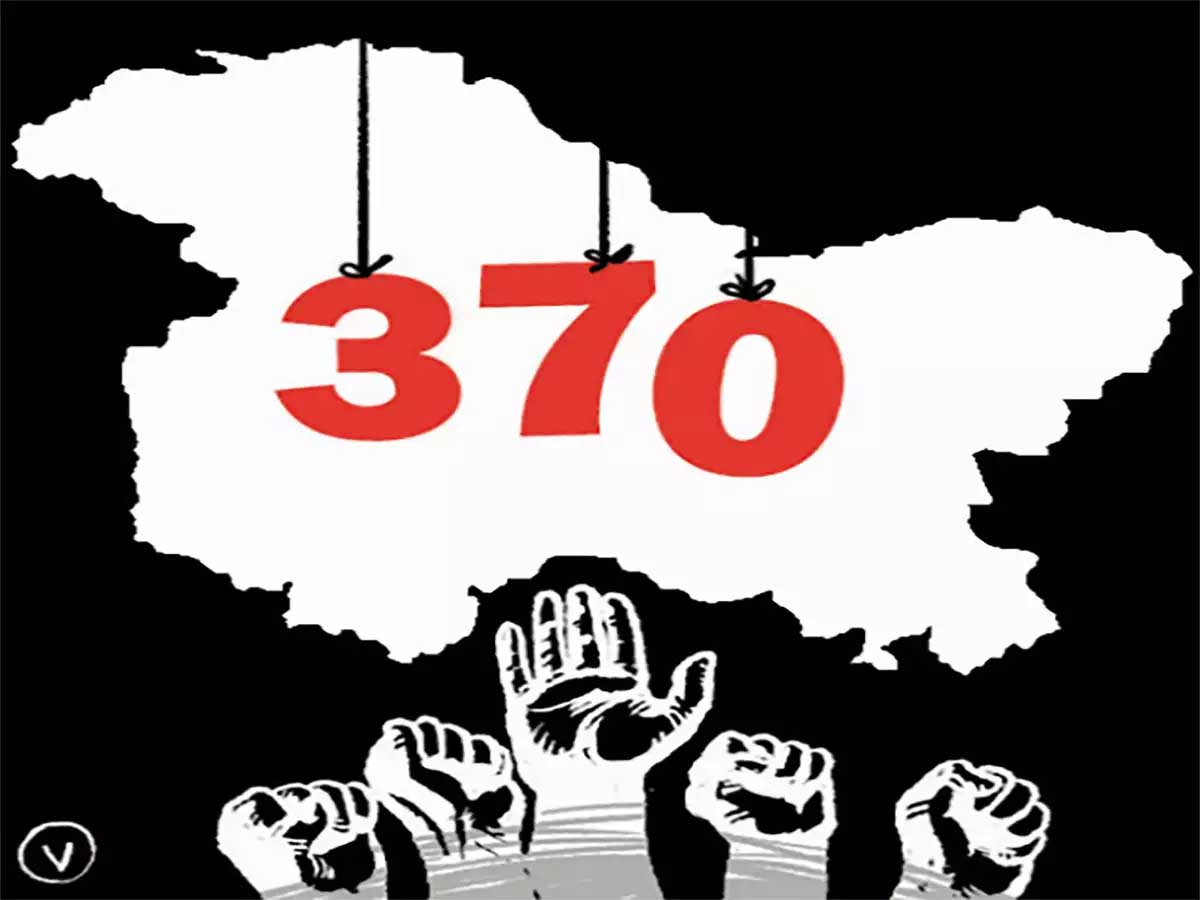This article is Part IV of the series to summarise the arguments presented by parties in the Article 370 hearings before the Supreme Court that have concluded on September 5, 2023. The court has reserved its judgement, in the case. This part deals with the arguments by the petitioners around the autonomy or the powers of the state of Jammu and Kashmir as a distinct political entity within the Union of India, and how the abrogation of article 370 takes away such autonomy.
Senior Advocate Zaffar Shah led the charge with respect to this issue. He argued that while Jammu and Kashmir had acceded to the Dominion of India, it had not integrated fully into the Union with a merger agreement. This leftover integration was done with the help of Article 370 and the people of Jammu and Kashmir (J & K) were given the power to decide on the levels of integration with the Union of India. He argued that for those matters mentioned in the Instrument of Accession, the President just had to declare that the provisions of Constitution applied to the state after a consultation, and for making law regarding Union or Concurrent list subjects which are not mentioned in the Instrument of Accession, a concurrence of the state government is needed, according to the Constitution. This limitation, he argued, was a way for the state to maintain its constitutional autonomy by restriction of the power of Parliament to make laws that apply to J & K.[1]
Zaffar Shah argued that no other state has this privilege, embedded within the Constitution to have consultations or concurrence with them as a requirement when Parliament wants to make a law on any subject. This, he argued, is the state’s Constitutional Autonomy embedded in Article 370.[2]
The bench remarked that the proposition saying Article 370 has a permanent character in the Constitution is a very difficult proposition. [3] Therefore, Justice Sanjay Kishan Kaul, stated that the question really is about the process of abrogation of Article 370 rather than the power to abrogate it, since the Article itself talks about abrogation. Later, the Bench also remarked that there was no conditional surrender of sovereignty to the dominion of India and that the surrender of sovereignty by Jammu and Kashmir was absolute and complete.[4] The Bench also opined that there are different limitations on Parliament, restricting it from law making on the subjects in the State List and therefore, this is not a special provision to have limitations on powers of Parliament.[5]
Mr. Shah however argued that the difference between other states and Jammu Kashmir is that the latter’s concurrence is needed for making of laws- a constitutional requirement, granting the right of concurrence to the state. There is no such power granted to other states, like that of Jammu and Kashmir’s, to require its concurrence for applying Constitutional Provisions, whether with exceptions and modifications, he argued.[6] He argued that despite the dilution of powers of the state of Jammu and Kashmir, there were still powers that existed, and the Presidential Orders took away that autonomy.[7]
Zafar Shah further argued that the Constitution (Application to Jammu and Kashmir) Order, 1954 provided for the requirement of the Legislature of State for increasing or diminishing the area of the state or altering the name or boundary of the state for a bill to be introduced in Parliament to that effect. He argued that when a bird’s eye view of the 1954 order is taken, it can be construed that that the state continued to have its autonomy in the matters specified in the order.[8]
Solicitor General Tushar Mehta, for the state, argued that internal sovereignty is being confused with autonomy by the Petitioners.[9] He argued that Jammu and Kashmir did not sign a Merger Agreement like many other states, and from the date on which Constitution came into force, the state became an integral part of the Union of India.[10]
External Sovereignty is with the Indian Union while the autonomy of the Federating units of a particular state lies with the state itself, with no state being exception. The Bench remarked that the Petitioners were arguing that there was a “modicum of sovereignty” which was exercised by the then Maharaja and not accession to the Union.[11] The Solicitor argued that the Maharaja could not have created a Constituent Assembly that is empowered to create a document having the same sanctity and sovereignty as the Constitution itself.[12]
(The author is a legal researcher with the organisation)
[1] Page 7, Day 5 Transcript, August 10, 2023, Article 370 Hearing, Supreme Court; https://www.scobserver.in/wp-content/uploads/2023/07/Argument-Transcript-August-10th-2023.pdf
[2] Page 8, Day 5 Transcript, August 10, 2023, Article 370 Hearing, Supreme Court; https://www.scobserver.in/wp-content/uploads/2023/07/Argument-Transcript-August-10th-2023.pdf
[3] Page 12, Day 5 Transcript, August 10, 2023, Article 370 Hearing, Supreme Court; https://www.scobserver.in/wp-content/uploads/2023/07/Argument-Transcript-August-10th-2023.pdf
[4] Page 17, Day 5 Transcript, August 10, 2023, Article 370 Hearing, Supreme Court; https://www.scobserver.in/wp-content/uploads/2023/07/Argument-Transcript-August-10th-2023.pdf
[5] Page 19, Day 5 Transcript, August 10, 2023, Article 370 Hearing, Supreme Court; https://www.scobserver.in/wp-content/uploads/2023/07/Argument-Transcript-August-10th-2023.pdf
[6] Page 22, Day 5 Transcript, August 10, 2023, Article 370 Hearing, Supreme Court; https://www.scobserver.in/wp-content/uploads/2023/07/Argument-Transcript-August-10th-2023.pdf
[7] Page 28, Day 5 Transcript, August 10, 2023, Article 370 Hearing, Supreme Court; https://www.scobserver.in/wp-content/uploads/2023/07/Argument-Transcript-August-10th-2023.pdf
[8] Page 34, Day 5 Transcript, August 10, 2023, Article 370 Hearing, Supreme Court; https://www.scobserver.in/wp-content/uploads/2023/07/Argument-Transcript-August-10th-2023.pdf
[9] Page 52, Day 10 Transcript, August 24, 2023, Article 370 Hearing, Supreme Court; https://www.scobserver.in/wp-content/uploads/2023/07/Transcript-24th-August.pdf
[10] Page 37, Day 10 Transcript, August 24, 2023, Article 370 Hearing, Supreme Court; https://www.scobserver.in/wp-content/uploads/2023/07/Transcript-24th-August.pdf
[11] Page 52, Day 10 Transcript, August 24, 2023, Article 370 Hearing, Supreme Court; https://www.scobserver.in/wp-content/uploads/2023/07/Transcript-24th-August.pdf
[12] Page 54, Day 10 Transcript, August 24, 2023, Article 370 Hearing, Supreme Court; https://www.scobserver.in/wp-content/uploads/2023/07/Transcript-24th-August.pdf
Related:
Article 370, permanent or temporary? Part II of arguments in Supreme Court

